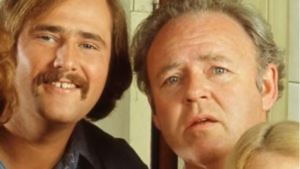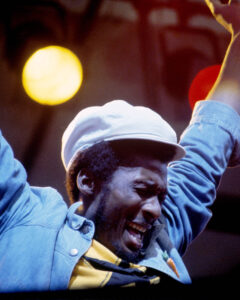An Exploration of the Operational Side of Music Festivals
Every year, music festivals attract millions of fans eager to experience their favorite artists, discover new sounds, and immerse themselves in an incredible atmosphere. From the outside, these events can seem like a seamless maze of stages, food stalls, and activities. But behind the scenes, every music festival is an intricate, well-oiled machine that takes meticulous planning, quick problem-solving, and a whole lot of teamwork to coordinate.
So what really goes into the operational side of a major music festival? This exploration walks you through the less glamorous—but totally fascinating—aspects of festival operations. From securing permits to ensuring safety and security, here’s everything you never knew about pulling off the perfect music festival!
The Blueprint: Planning and Permits
Before a festival sells a single ticket or finalizes an artist lineup, it must make sure the event can happen in the first place. To do so, coordinators start by finding a place to host and getting permission to set up there from local authorities. Whether it’s a massive outdoor event like Coachella or a smaller, niche festival, every music gathering has to adhere to regional regulations.
Choosing the Right Location
Finding the perfect venue is more complicated than you might think. Organizers need to consider crowd capacity, parking, access to public transport, and even noise restrictions in the area. A rural landscape might look dreamy, but if it lacks Internet connectivity, basic infrastructure, or roads capable of handling large crowds, it could cause logistical nightmares.
Obtaining Permits
Permits are the green light to hold a festival. Depending on the region, organizers might need permissions for public gatherings, alcohol sales, noise levels, drone usage, and so forth. Cities have specific protocols, so festival organizers often hire legal teams familiar with event-related regulations to save time and headaches.
Behind the Playlist: Booking Talent and Scheduling
The biggest and best music festivals are such because they feature artists that everyone is craving to see on stage. A-list talent or niche groups with die-hard fans are what get a crowd through the gates and having a blast throughout the event. But, as you can imagine, securing talent is not as simple as calling a few artists and asking them to show up.
Artist Contracts
Booking artists requires negotiating contracts, and this needs to happen months—sometimes years—in advance. All artists, especially big ones, have unique requirements regarding performance fees, travel accommodations, rider requests, and more. Organizers must ensure these details align with their budgets and festival logistics. It’s not uncommon for an artist to fall through because of legal technicalities or an inability to negotiate mutually acceptable terms.
Scheduling Set Times
Scheduling set times is one of the most delicate balancing acts. Organizers don’t want two crowd-pulling headliners performing at the same time on different stages, and they definitely don’t want an acoustic singer-songwriter competing with a bass-heavy EDM act. Stage proximity, sound bleed, and audience flow all play into the process.
Keeping Everyone Safe: Security Considerations
When thousands of people congregate in one area, safety becomes a top priority for both attendees and staff.
Entry and Crowd Control
Getting people in and out of a festival safely is a monumental task, especially for events drawing tens of thousands of attendees. Security teams must monitor entry points, conduct bag checks, and verify tickets to ensure everything runs smoothly.
One of the biggest challenges is preventing ticket fraud and counterfeiting. Many festivals now use digital wristbands, which are harder to fake, as an extra layer of protection.
Medical and Emergency Teams
It’s important to be prepared for every possible scenario. Heat exhaustion, dehydration, and other physical injuries are common at outdoor festivals, so having visible first-aid stations and trained medical staff is essential. Festivals also create emergency evacuation plans should severe weather or other crises arise.
Monitoring the Crowd and Structures
Once attendees are inside, the focus shifts to real-time crowd management. Surveillance cameras, on-ground security personnel, and backstage teams all work to spot and handle potential issues, from overly rowdy fans to misplaced children.
Technology plays a key role. For example, RFID wristbands can track crowd density and help event organizers anticipate areas that may need additional monitoring. Likewise, there might be buildings on the event’s campus that staff need to use for surveillance, storage, ticketing, and so forth. For these structures, event planners might use proximity access control systems to prevent random attendees from entering secured areas.
Food, Drinks, and Waste Management
Who doesn’t love grabbing a loaded burger between sets or rehydrating with a cold drink on a blazing summer day? F&B (food and beverage) operations are more than just snacks; they’re a vital component of festival management.
A Taste of Variety
Festivals aim to cater to a diverse range of tastes by partnering with local vendors and food trucks. Some even curate themed food options to complement the event’s vibe, like craft beer tents at rock festivals or vegan pop-ups at eco-conscious events.
Keeping Waste Under Control
With food comes trash. A single weekend event can create tons of waste that must go somewhere. Therefore, a big part of festival management is having enough trash receptacles on-site, encouraging attendees to throw away garbage, and reducing single-use materials where possible.
Audience Experience and Community
Beyond providing music, festivals strive to create unique, immersive environments for attendees to enjoy. Art installations, pop-up experiences, and photo booths are just some of the ways festivals engage audiences. Coachella, for example, has become as much about its larger-than-life art pieces as the performances themselves. These elements not only entertain but also create Instagram-worthy moments that fuel FOMO and help with festival promotion.
Wrapping It All Up
Music festivals are complex marvels of planning, filled with countless moving parts that need to align perfectly for the events to succeed. From securing permits to ensuring attendee safety, every detail matters. And behind every iconic festival moment is a team of organizers and workers who turned an ambitious vision into reality. Now that you’ve read this exploration of the operational side of music festivals, you can appreciate all of the hard work that goes into making them so magical, immersive, and unforgettable.
Share this content:














Post Comment